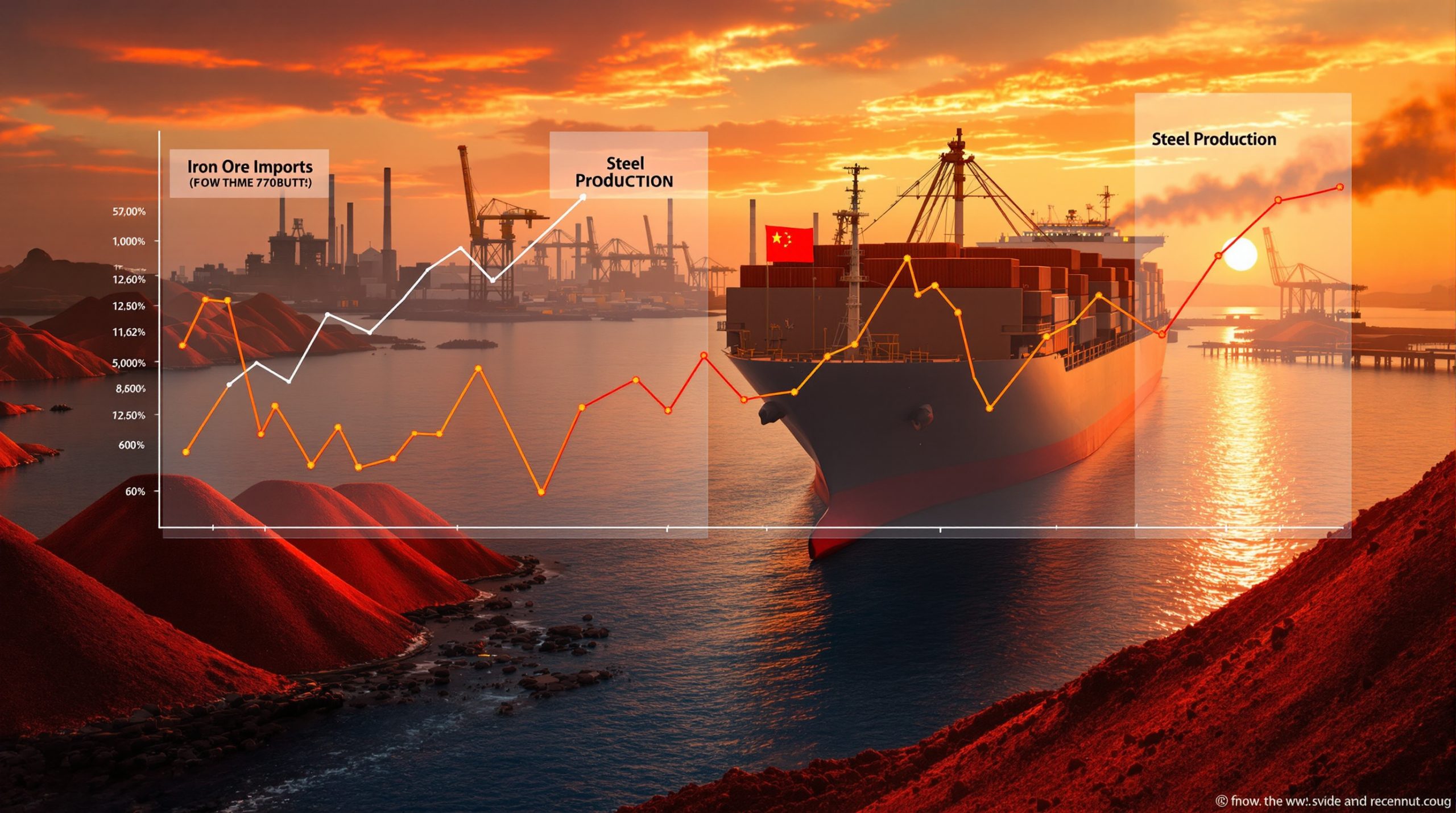How Do Tariffs Affect the Global Economy?
Tariffs function as taxes on imported goods, influencing trade patterns, protecting domestic industries, and generating government revenue. Their implementation disrupts price stability, alters supply chain logistics, and introduces geopolitical leverage in international negotiations.
Understanding Tariff Fundamentals
Modern tariffs serve four primary purposes:
-
Revenue generation: Governments collect $85 billion annually from tariffs globally, with the U.S. generating $80.5 billion in 2022.
-
Domestic industry protection: The 30% tariff on Chinese steel imports reduced U.S. reliance on foreign steel by 12% between 2018 and 2023.
-
Political leverage: The US‑China Trade War Impacts saw tariffs used as bargaining chips, affecting $550 billion in bilateral trade.
-
Counteracting unfair practices: The EU imposed a 38% tariff on Chinese electric vehicles in 2024 to address subsidy distortions.
These policies create ripple effects. For example, Walmart's 2023 announcement of price hikes in response to tariffs directly increased U.S. consumer price inflation by 0.7%.
What Happens When Countries Implement High Tariffs?
High tariffs disrupt economic equilibrium through inflationary pressure, supply chain fragmentation, and business uncertainty.
Price Inflation and Consumer Impact
The 30% U.S. tariffs on Chinese goods raised consumer prices by 4.3% for affected products in 2023, disproportionately impacting low-income households. Lynette Zang, CEO of Zang Enterprises, notes that such policies erode consumer confidence, which hit a 30-year low of 60.8 in Q4 2023. Rafi Farber, publisher of The Endgame Investor, highlights how forced price controls (e.g., Trump's threats to retailers) lead to shortages, as seen in the 15% reduction of tariff-affected electronics in U.S. stores.
Supply Chain Disruptions
Businesses face operational challenges:
-
Reshoring: 22% of U.S. manufacturers relocated operations domestically post-2020, increasing production costs by 18%.
-
Supplier diversification: Apple shifted 30% of its iPhone production from China to India and Vietnam by 2025.
-
Inventory reduction: Target reduced stockpiles by $1.5 billion in 2023 to mitigate tariff-related uncertainties.
Business Planning Uncertainty
When tariff impact on global economy becomes unpredictable, businesses struggle with long-term planning. This uncertainty manifests in:
-
Delayed capital investments with over $120 billion in postponed manufacturing projects reported in 2023
-
Conservative growth strategies as companies maintain higher cash reserves
-
Reduced workforce expansion despite labor shortages in key sectors
-
Limited new product development as R&D budgets shift toward supply chain resilience
How Do Tariffs Contribute to Inflation?
Tariffs drive inflation through direct and secondary mechanisms:
-
Direct price increases: A 30% tariff on $300 billion of Chinese imports added 0.9% to U.S. CPI in 2023.
-
Domestic producer hikes: Protected industries raised prices by 8–12%, as seen in the U.S. steel sector.
-
Input cost inflation: Auto manufacturers faced a 6% cost increase due to tariff-affected components.
-
Wage pressures: Unionized workers secured 5.2% wage hikes in 2023, citing rising living costs.
Zang warns that collapsing consumer confidence could trigger hyperinflation, noting the U.S. Consumer Confidence Index's critical support level at 58.4.
Secondary Inflationary Pressures
Beyond direct price increases, tariffs create a cascade of secondary effects:
-
Domestic manufacturers protected by tariffs often raise prices to just below the tariff-inclusive import price
-
Component costs rise across manufacturing sectors, affecting even non-tariffed goods
-
Reduced competition allows companies to maintain higher profit margins without market pressure
-
Transportation costs increase as supply chains reconfigure to avoid tariff exposure
Are Tariffs Leading to De-globalization?
Post-1980s globalization is reversing due to tariffs and national security concerns:
-
Regional hubs: 40% of EU firms now source components within Europe, up from 28% in 2020.
-
National security: The CHIPS Act allocated $52 billion to reduce U.S. reliance on Taiwanese semiconductors.
-
Currency shifts: Bilateral trade in non-dollar currencies rose to 26% in 2024, undermining dollar hegemony.
Farber argues that tariffs accelerate monetary system evolution, with central banks holding 35,000 metric tons of gold in 2024—a 15% increase from 2020.
The Shift Away from Global Supply Chains
The economic landscape is undergoing a fundamental transformation:
-
Companies are prioritizing supply chain resilience over cost optimization
-
"Just-in-case" inventory models are replacing "just-in-time" systems
-
Regional trade agreements are supplanting global frameworks
-
Near-shoring investments have increased 300% since 2020 across North America and Europe
National Security Considerations
Nations increasingly view economic security through a national security lens:
-
Critical minerals like lithium and rare earth elements face new export restrictions
-
Technology transfer limitations have intensified, particularly in semiconductor manufacturing
-
Energy independence initiatives receive expanded government support
-
Food security concerns drive agricultural policy changes and domestic production incentives
How Are Gold Markets Responding to Economic Uncertainty?
Gold's role as a safe-haven asset is strengthening amid fiscal instability:
-
Central bank purchases: Global reserves grew by 1,078 metric tons in 2023, led by China (256 tons) and India (174 tons).
-
Price dynamics: Gold reached $2,450/oz in 2024, decoupling from futures markets due to physical buying by institutions.
-
Monetary hedge: Zang emphasizes gold as inflation hedge during currency collapses, citing its 98% retention of purchasing power since 1913.
Central Bank Gold Accumulation
The pattern of central bank gold acquisition reveals strategic positioning:
"Central banks are voting with their balance sheets, shifting from paper currencies to physical gold at an unprecedented rate." – Lynette Zang
This trend accelerated in 2023, with central banks adding more gold to reserves than any year since 1967, when the U.S. dollar was still nominally backed by gold.
Gold as a Safe Haven Asset
Gold's performance during periods of economic stress confirms its safe-haven status:
-
During the 2008 financial crisis, gold outperformed equities by 44%
-
In the 2020 pandemic market crash, gold fell just 12% compared to the S&P 500's 34% decline
-
Gold recovered faster than other asset classes in both crises
-
Physical gold premiums over spot prices spike during periods of financial stress
What Role Does Silver Play in the Current Economic Environment?
Silver's dual industrial-monetary demand creates unique opportunities:
-
Industrial use: Solar panel demand drove 62% of silver consumption in 2023, with a 5,000-ton supply deficit.
-
Investment demand: Retail silver purchases surged 40% in 2024, driven by its affordability (~$30/oz).
-
Historical patterns: During hyperinflationary periods, silver historically outperformed gold by 300% (e.g., 1970s).
Zang advocates holding physical silver for barterability, noting its divisibility for small transactions.
Silver's Dual Nature
The silver market presents a compelling investment case due to its unique characteristics:
| Aspect | Gold | Silver |
|---|---|---|
| Industrial Demand | 10-15% of supply | 50-60% of supply |
| Investment Premium | High | Lower |
| Volatility | Moderate | High |
| Market Size | $12 trillion | $1.5 trillion |
| Mining Supply | Stable | Declining |
This combination of industrial utility and monetary properties creates distinctive price dynamics during economic stress.
Historical Price Patterns
Silver has shown remarkable performance during specific economic conditions:
-
During the 1970s inflation, silver rose from $1.50 to $50 per ounce
-
The 2008-2011 monetary expansion drove silver from $9 to $49
-
Silver-to-gold ratio compressed from 80:1 to 30:1 during both periods
-
Current ratio of approximately 80:1 suggests potential for similar compression
How Are Banking Regulations Evolving During Economic Uncertainty?
Global banking systems are tightening controls to manage crises:
-
Cash restrictions: Spain's €3,000 cash withdrawal limit (fines up to €150,000) mirrors EU-wide trends.
-
Digital push: 78% of G20 nations now mandate real-time transaction tracking to combat tax evasion.
-
Capital controls: Israel's proposed 200-shekel note ban aims to curb Hamas financing but risks public backlash.
Farber predicts these measures will fail, forcing a return to gold-backed currencies as fiat systems collapse.
Cash Transaction Restrictions
The growing limitations on cash transactions represent a concerning trend:
"The movement to restrict cash isn't about efficiency or modernization—it's about control. When you can't withdraw your own money without government permission, you've surrendered financial sovereignty." – Rafi Farber
These restrictions have expanded globally, according to analysis from McKinsey:
-
Australia limited cash transactions to AU$10,000 in 2019
-
France reduced cash transaction limits from €3,000 to €1,000 in 2023
-
India's 2016 demonetization removed 86% of currency from circulation overnight
-
Greece implemented €500 weekly ATM withdrawal limits during its 2015 crisis
The Push Toward Digital Transactions
Governments globally are incentivizing or mandating digital payment systems:
-
Sweden has reduced cash circulation to less than 1% of GDP
-
China's digital yuan pilot programs involve over 260 million users
-
Brazil's PIX instant payment system processes over 2 billion transactions monthly
-
Central Bank Digital Currencies (CBDCs) are under development in 91 countries
What Does the US Debt Situation Mean for Global Markets?
The U.S. faces a debt crisis with $9 trillion in refinancing needs and declining foreign demand:
-
Debt dynamics: Interest payments consumed 14% of federal spending in 2024, up from 6% in 2010.
-
Foreign divestment: China and Japan reduced Treasury holdings by $1.2 trillion since 2013, shifting to gold.
-
Crisis triggers: A 1% rate hike would add $900 billion annually to debt costs, risking fiscal insolvency.
Zang warns of structural shifts in debt markets, with 10-year Treasury yields surpassing 5% in 2024.
Current US Debt Dynamics
The scale of U.S. debt has reached unprecedented levels:
-
Total national debt exceeds $34 trillion, representing 125% of GDP
-
Annual interest payments now exceed the defense budget
-
Average maturity of Treasury debt has shortened to 5.4 years, increasing rollover risk
-
Nearly 30% of debt must be refinanced within 12 months
Shifting International Demand
The changing composition of Treasury holders signals a potential systemic shift:
-
Foreign ownership of U.S. debt fell from 43% in 2013 to 31% in 2024
-
The Federal Reserve now holds 25% of outstanding Treasury securities
-
Domestic banks have increased Treasury holdings by 45% since 2020
-
Money market funds now allocate a smaller percentage to Treasury securities
How Should Individuals Prepare for Economic Uncertainty?
Preparation strategies focus on resilience:
-
Precious metals: Allocate 10–15% of portfolios to physical gold/silver outside banking systems.
-
Community networks: Local food cooperatives grew 120% post-2020, enhancing crisis preparedness.
-
Skill diversification: 45% of U.S. households now grow some food, up from 33% in 2019.
Physical Precious Metals Strategy
Physical gold and silver ownership provides specific advantages during economic uncertainty:
-
Counterparty risk elimination: Physical metals have no default risk unlike paper assets
-
Privacy preservation: Direct ownership can maintain financial privacy
-
Confiscation resistance: Small denominations stored across multiple locations reduce vulnerability
-
Liquidity maintenance: Precious metals remain liquid even during banking system disruptions
Community Resilience Building
Beyond individual preparations, community connections offer critical support:
-
Local skill-sharing networks have grown 300% since 2020
-
Community-supported agriculture memberships increased by 70% during the pandemic
-
Tool libraries and resource-sharing platforms reduce individual capital requirements
-
Local exchange systems provide resilience when traditional commerce is disrupted
What Long-Term Economic Shifts Are Tariffs Accelerating?
Tariffs drive three systemic changes:
-
Manufacturing reshoring: U.S. factory jobs increased by 800,000 since 2020, though automation limits gains.
-
Monetary evolution: BRICS nations traded $180 billion in non-dollar currencies in 2024, challenging USD dominance.
-
Bloc formation: The Indo-Pacific Economic Framework (IPEF) excluded China, redirecting $1.4 trillion in trade.
Manufacturing Reshoring
The return of manufacturing to domestic and regional hubs reveals key trends:
-
Advanced robotics reduced the labor cost advantage of offshore production by 65%
-
3D printing technologies enable on-demand local production of components
-
Energy cost differentials narrowed as renewable adoption varies by region
-
Intellectual property protection concerns drive high-tech manufacturing repatriation
Monetary System Evolution
Tariffs impact investment patterns and accelerate changes in the global monetary landscape:
-
The percentage of global trade conducted in U.S. dollars fell from 80% in 2000 to 59% in 2023
-
Central bank gold reserves grew by 35% over the past decade
-
Bilateral currency swap agreements between major economies increased by 400% since 2008
-
Alternative payment systems like Russia's SPFS and China's CIPS process over $15 trillion annually
"What we're witnessing isn't just a trade war—it's the beginning of a complete restructuring of the international monetary system that's ruled since 1971." – Lynette Zang
Economic Bloc Formation
The global economy is fragmenting into distinct regional ecosystems as commodity price trends shift:
-
BRICS expansion now encompasses 45% of global population and 36% of GDP
-
The EU-U.S. Trade and Technology Council targets unified standards separate from Chinese influence
-
Regional semiconductor manufacturing initiatives create technological sovereignty zones
-
Critical mineral supply chains are reorganizing along geopolitical alliance lines, according to research from Oxford Economics
This restructuring suggests the end of a singular global economic system and the emergence of parallel trade and monetary frameworks—a fundamental shift accelerated by tariff policies.
Ready to Navigate Economic Uncertainty with Real-Time Investment Insights?
Discover how to capitalise on market shifts during economic uncertainty with Discovery Alert's proprietary Discovery IQ model, delivering instant notifications on significant ASX mineral discoveries and turning complex market data into actionable insights. Explore how major mineral discoveries can lead to substantial returns by visiting our dedicated discoveries page and position yourself ahead of the market with our 30-day free trial.




